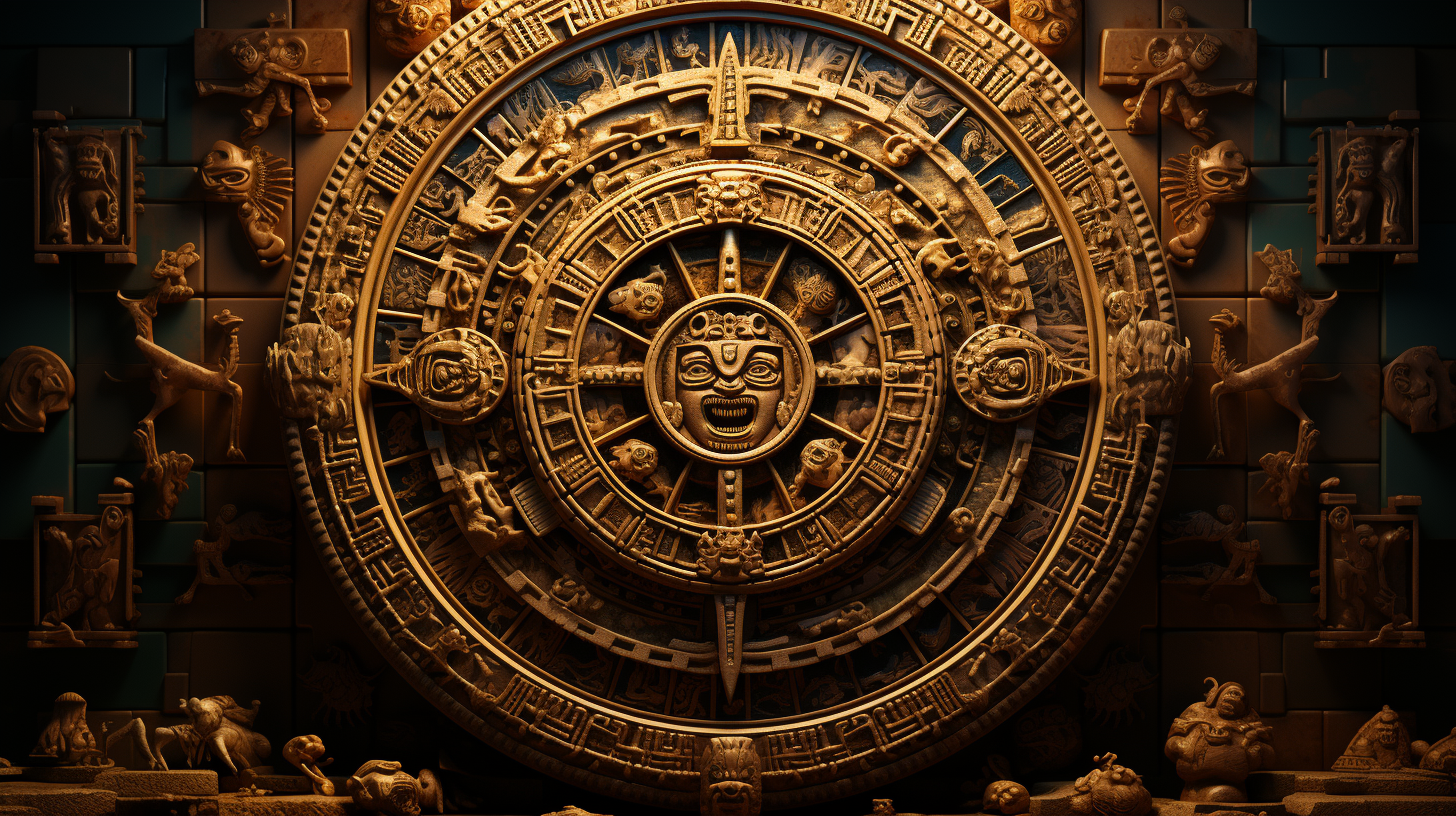Opening
History’s intricate tapestry often holds mysteries that challenge our present-day understanding and leave us in awe of the achievements of past civilizations. Among these enigmas lies the Mayan culture’s remarkably sophisticated calendar system. As we plunge into the depths of this ancient civilization’s knowledge, a compelling question arises: Could extraterrestrial forces have influenced the creation of the Mayan calendar, or was it the pure genius of human minds? Join us on a journey to unravel the mysteries surrounding the captivating world of the Mayan calendar.
The Mayan Calendar: A Timekeeping Masterstroke
Central to the Mayan civilization’s accomplishments is their extraordinary calendar system, showcasing their profound grasp of celestial mechanics. Through calendars monitoring celestial movements and governing crucial aspects of daily life, the Mayans displayed a level of sophistication that continues to astound us.

The Mayans devised a variety of calendars, each serving a unique purpose. Among the most notable were the Long Count, the Tzolk’in, and the Haab’. The Long Count, a marvel of mathematical precision, recorded vast time spans, showcasing the Mayans’ ability to conceptualize and measure years’ passage.
The Tzolk’in and Haab’: Divine Precision in Motion
The Tzolk’in, often known as the spiritual calendar, comprised a 260-day cycle meticulously synchronized with celestial phenomena. It played a vital role in orchestrating ceremonies and honoring revered deities. Meanwhile, the Haab’ calendar, intricately linked with agricultural cycles, provided precise guidance for planting and harvesting activities.
Ancient Astronomical Guidance or Human Brilliance?
The complexity and accuracy of the Mayan calendar have sparked intriguing conjectures. One theory, popularized by Giorgio Tsoukalos and echoed in the Chilam Balam texts, posits that divine forces influenced the Mayans’ profound grasp of mathematics, astronomy, and agriculture. According to this notion, celestial beings descended from the skies, imparting wisdom to the Maya and catalyzing their unmatched achievements.
While this idea evokes wonder, it’s crucial to navigate the thin line between ancient wisdom and speculative tales. Critics argue that attributing the Mayans’ accomplishments solely to extraterrestrial intervention diminishes the remarkable capabilities of this civilization. The Mayans’ intimate connection to their surroundings, their keen observations of the cosmos, and their commitment to intellectual pursuits could have been the driving forces behind the brilliance of their calendar.
Untangling the Fabric of Time
As we ponder the intricate threads of the Mayan calendar’s enigma, we are reminded of the captivating interplay between human innovation and the mysteries of the universe. The Mayans’ quest to comprehend time and its celestial cues unveils a civilization striving to harmonize with the cosmic realm.
Ultimately, whether divine knowledge guided the Mayans or their brilliance flourished autonomously, their calendar stands as a testament to humanity’s limitless capacity for exploration and revelation. The mystery of the Mayan calendar beckons us to reflect on the enigmatic interplay of human intellect and the cosmos, underscoring that history’s fabric blends the real and the imaginative.
Video:
Closing Thoughts
The Mayan calendar, a magnificent testament to human prowess, continues to enchant us with its intricate design and cosmic accuracy. While the allure of ancient aliens imparting knowledge to the Maya is enticing, it’s vital to acknowledge the depth of human ingenuity that this civilization brought to light. The mystery of the Mayan calendar calls on us to celebrate both the concrete achievements of our forebears and the endless potential of the human intellect. In the end, the interplay between these dual forces shapes the fabric of history and guides us toward a deeper comprehension of our place in the cosmos.
